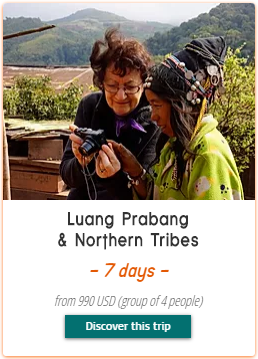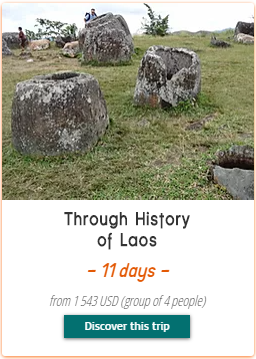Focus on Laotian handicraft : Mulberry tree making by Nahm Dong Park
- Charly Renaudin

- Sep 13, 2019
- 3 min read
Updated: Jul 24, 2020
Handicraft is an important part of a country’s culture. It’s linked to its daily life, its history and its people. Northern Laos is still a rural area; thus, several objects are still homemade by local tribes. Bamboo baskets, silk scarves, mulberry paper are few examples of these very rich ethnic traditions. How do they make it? How it’s linked to their daily life? Why do they keep doing it whereas it’s not needed anymore? How is this science transmitted? So many questions that we will answer. As it’s not our field of knowledge, we asked for help from experts. In this article, we focus on making mulberry paper with Leck from the "Nahm Dong Park". Enjoy the reading!

Sabaïdi Leck. Could you briefly introduce us to what is the Nahm Dong Park?
Only 10 km far from Luang Prabang, Nahm Dong Park is 18 hectares of jungle crossed by a river and a waterfall. It is also a place dedicated to experimentation of biological cultures, orchards, breeding ... which allows us to function in self-sufficiency. Visitors can easily spend an entire day walking, swimming, ziplining, hiking, or attend one of our workshops (cooking classes, bamboo weaving, mulberry paper making...) while enjoying this exceptional setting in the heart of nature.
Today, we focus on mulberry paper making.
Where does this handicraft come from?
This method originated in China and it was invented in 105 after J-C. At that time, we used different plant fibers such as mulberry, hemp ... This is where the technique was created and developed, before spreading through Southeast Asia and Central, and much later in the Middle East and Europe.
Where can we find mulberry tree? And what is the process to make paper from it?
Mulberry tree can be found everywhere throughout Southeast Asia. The ideal tree must be between 1 and 5 years old because after the bark loses its flexibility. The making of the paper starts by harvesting the raw material: the bark. For this, we use a knife, we make long cuts to take off a square section. The brown / black outer part is then removed to keep only the fibrous white part. It must then dry in the sun for at least 2 hours.
After that, the bark is boiled for 8 to 10 hours to soften it. Then, comes the most physical stage: pounding the material to obtain a relatively homogeneous whitish paste. For this, we traditionally use a hammer / pestle system. Note that there are now modern machines to avoid this hard work. The mixture is naturally yellowish and ash can be incorporated to whiten it.
Once the paste is obtained, it is put in a frame whose bottom is made from mosquito net and immersed in a water bath. This allows the water to circulate without the dough escaping. The frame determines the format of the future paper. This mixture is then stirred to loosen the fibers and divide the "lumps". At this point, one could dry this paste to obtain paper made for writing. But to make a nice souvenir, we will add decorative flowers that are stuck between the fibers. Colors and shapes are according to everyone's taste. Once this creative part is over, we take the frame out of the water and put it to dry. After 3 hours in the sun, the paper is ready !
How is this handicraft transmitted?
As for many ancestral techniques, the transmission is purely oral and is from generation to generation. Leck, who runs the workshop, learned everything from his father.
How id mulberry paper used nowadays?
The primary goal was to make writing paper, it is now replaced by modern one. The texture of mulberry paper is very beautiful and new techniques can color it. It has become more decorative. It is used a lot to make calligraphy or paintings, notebooks, lampshades, fans, photo frame backgrounds ... These are great memories that you can buy at the night market of Luang Prabang.
Have you seen an increasing interest from tourists for local handicraft?
Yes, a lot. The workshops that we propose attract many people. They allow adults and children to learn about local crafts and discover forgotten methods. Weaving bamboo, making mulberry paper or embroidery are great activities to spend a fun time with family for example. Making rice alcohol, we leave that for the adults 😊
We would like to thank Leck from Nahm Dong Park for all these details. It's so nice to hear an expert talking about what he likes. We hope that, thanks to this article, you have learned a lot about this type of craft. And if you are interested in pottery, silk weaving or bamboo weaving, new articles are coming. So, stay tuned! Moreover, if you want to organize your trip to Laos and discover this local culture, do not hesitate to contact us. See you soon !
#sapaper #mulberrypaper #sapaperworkshop #workshop #mulberrytree #nahmdongpark #laos #craft #handicraft #tradition #laotianculture #laoculture #travellaos #luangprabang




































Comments